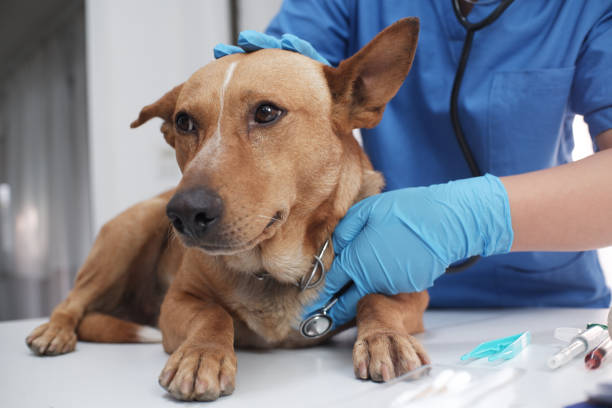7 Ways On How to Care for your Cat with Diabetes
One of the most difficult parts of owning a cat with diabetes is providing them with the right diet and medicines so that they can be as healthy as possible. It's important to remember that it's not always easy to keep your cat happy and healthy, especially if you don't know what their special needs are. This article will go through 7 ways on how to care for your cat with diabetes and make sure they stay healthy and happy.
1.Consistent exercise
Regular exercise can help to control your pet's blood sugar levels and keep them stable.
It's important to remember that exercise is not just about going for a walk or running around the yard. It also includes other types of physical activity, such as climbing stairs, jumping on furniture, playing catch with a ball or just moving around while you're doing household chores.
Aside from that, an active cat will also have better circulation and a stronger immune system than one that doesn't get enough exercise. Exercise also helps cats lose weight, which can lower blood sugar levels.
Nevertheless, it is important to find an activity that you both enjoy. If your cat doesn't seem interested in going on walks or playtime, try finding other activities that he enjoys such as belly rubs, playing fetch or chasing toys around the house.
2. Control their diet
You can help control the amount of sugar in your cat's diet by making sure it gets enough fiber. Cats can't digest fiber, so they pass most of it through their intestines without absorption. As a result, fiber helps keep blood sugar levels stable and reduces insulin resistance in cats.
Fiber also helps prevent constipation and diarrhea because it acts as a bulk laxative for cats' stools. Cats with diabetes are more susceptible to these problems because their bodies aren't as efficient at absorbing nutrients from food, which can lead to an overgrowth of harmful bacteria in their digestive tract.
That's why, one way to help reduce the amount of sugar in your cat's diet is by feeding him high-fiber foods, such as raw fruits and vegetables, whole grains and legumes (peas, beans and lentils). These foods provide lots of soluble fiber that also helps prevent constipation and diarrhea by increasing water intake more than normal.
3. Monitor their glucose diet
Monitoring their diabetes is a very important step that you must take, as it will help you monitor the condition of your pet and make sure that they are doing well.
You can do this through blood sugar readings. These readings will tell you if your pet is having high or low blood sugar levels. You can also look at how often they have been tested and what has been found in the results.
Another is by their weight. If your pet loses weight due to having diabetes, then it might be necessary to check their blood sugar level again so that it can be checked and re-adjusted accordingly.
You can also check their blood pressures. If there are signs of high blood pressure, then it might be necessary for them to undergo additional testing which would involve taking more readings from their body fluids and comparing these readings with previous ones taken by a medical professional or someone else who is experienced in this area.
This way, you will be able to also clearly monitor your cat's health and well-being without resorting to much more complicated procedures.
4. Start insulin therapy
This is a long-term treatment for a cat with diabetes.
Your cat needs to take insulin to help control her blood sugar levels. If she doesn't take enough insulin, she could develop high blood sugar levels, which can lead to serious health problems. Insulin can also be used to treat low blood sugar in cats with type 1 diabetes or insulin resistance (diabetes mellitus).
It's also important that your cat takes the right amount of insulin and at the right time of day. Your vet will advise you on how much insulin to give your cat, but it's usually recommended to give a bolus dose in the morning and evening, along with an additional bolus dose during mealtimes.
Insulin is most effective when injected straight into the bloodstream (intravenously), so your vet may recommend doing this at home if you're unable to visit her clinic regularly. This means you'll need access to a needle, syringe and medicine vial as well as someone who knows how to insert an IV line safely (this is not something your average pet owner can do!)
At first, you may need to give your cat insulin twice a day to help her maintain her blood glucose level. Over time, as she learns how much insulin she needs and gets used to the injections, you may only need to give her once every few days.
5. Spay your female cat
This can be done at any time of the year, but in case of diabetes, it is recommended to do it when their blood sugar levels are at optimum.
Cat spaying helps in lowering the chance of getting diabetes or pre-diabetes. It will also help in maintaining a proper weight and regulating their body temperature.
However, if you have a female cat that is already diabetic, then you need to consider spaying her immediately as she may not be able to produce enough insulin to cope up with her own body needs.
6. Regular veterinary checkups
A regular veterinary visit is important for any pet owner. It allows you to learn about your cat's health and check for any problems. It also gives you an opportunity to ask questions about their health and get advice if needed.
Aside from that, it is also a good idea to have your vet check up on your cat's blood sugar levels every few months or so, just as they would with humans who have diabetes. This way, if things change (for example, if a new medication is added or the dose changed), you'll know right away rather than waiting until something goes wrong.
7. Try cranberry-based urinary supplement
Cranberry is a natural and safe way to treat and prevent urinary tract infections in cats. Cranberries work by increasing the amount of bacteria that naturally live in your cat's bladder, giving them the ability to fight off infection when it does occur.
The cranberry-based urinary supplement is also a great way to help prevent diabetes in cats. Cats with diabetes are at risk for developing some of the same complications that can occur in humans, including nerve damage and kidney disease. A diet low in sugar and high in fiber helps keep your cat's blood sugar levels stable, reducing the chance of developing diabetes.
As a matter of fact, cranberry extract has been shown to reduce insulin resistance and lower blood glucose levels without affecting blood pressure or cholesterol levels. It's also proven to improve insulin sensitivity, which can help prevent your cat from developing type 2 diabetes later on in life.
Not only do diabetic cats have to go through the unpleasant daily routine of receiving insulin injections, but they also have to be extra careful with their diets to avoid complications and other conditions. If you can help your diabetic cat with proper nutrition and care, you might be able to help extend their lifespan, or at least improve their quality of life. It's not going to be easy, but it's probably worth the effort.
For more helpful and informative insights, visit here .





